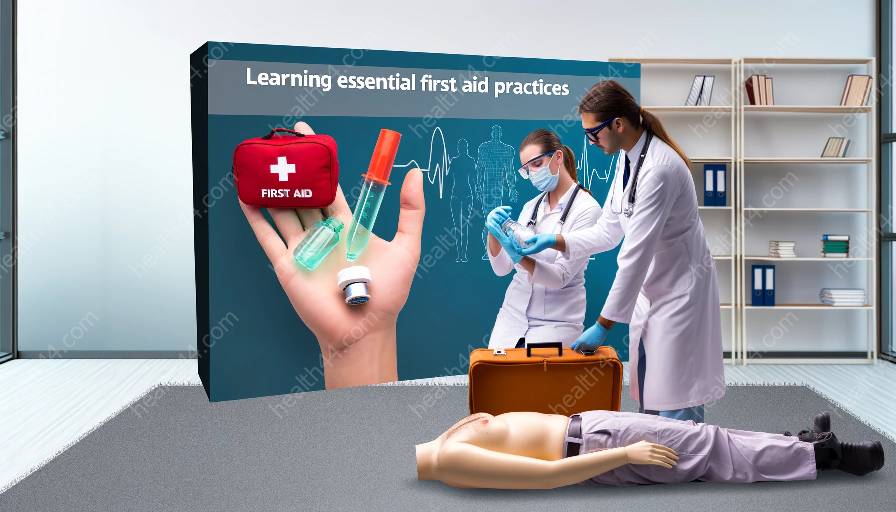Dental emergencies can occur at any time, and knowing how to manage them effectively is crucial. This comprehensive guide provides valuable insights into handling urgent dental situations, incorporating first aid principles, and offering essential health education and medical training.
Understanding Dental Emergencies
Dental emergencies encompass a wide range of urgent situations, including severe toothaches, broken or knocked-out teeth, injuries to the soft tissues of the mouth, and abscesses. These incidents can cause immense pain, discomfort, and distress, requiring immediate action and intervention.
When faced with a dental emergency, it is essential to remain calm and take prompt steps to alleviate pain and prevent further complications. The following step-by-step guide outlines the key principles of managing dental emergencies, integrating first aid techniques and valuable insights from health education and medical training.
First Aid Principles for Dental Emergencies
First aid plays a crucial role in managing dental emergencies, as it allows individuals to provide immediate care and support until professional help is available. Understanding the following first aid principles can make a significant difference in the outcome of a dental emergency:
- Maintain Calmness: Remaining calm is essential in any emergency situation. By staying composed, you can think clearly and take appropriate actions to help the individual in need.
- Assess the Situation: Before taking any action, carefully assess the severity of the dental emergency. Determine the nature of the injury and the level of pain experienced by the affected individual.
- Control Bleeding: In cases of dental trauma or injury to the soft tissues of the mouth, it is important to control bleeding. Apply gentle pressure with a clean cloth or gauze to the affected area to stem the flow of blood.
- Protect Knocked-Out Teeth: If a tooth has been knocked out, handle it by the crown (top part) only. Rinse the tooth with water if it is dirty, but do not scrub or remove any attached tissue fragments. Try to reinsert the tooth into the socket and hold it in place while seeking immediate dental assistance. If reinsertion is not feasible, store the tooth in a container of milk or the individual's saliva and transport it to the dentist promptly.
- Manage Pain: Severe toothaches or dental injuries can cause significant pain and discomfort. Providing over-the-counter pain medications, such as ibuprofen or acetaminophen, can help alleviate the individual's discomfort before they receive professional dental care.
Health Education and Medical Training for Dental Emergencies
Health education and medical training are valuable resources in preparing individuals to effectively manage dental emergencies. By receiving comprehensive training and education in dental first aid, individuals can confidently respond to urgent situations and provide vital assistance to those in need.
A comprehensive health education and medical training program for dental emergencies may cover the following essential topics:
- Identification of Dental Emergencies: Understanding the common signs and symptoms of dental emergencies, including toothaches, abscesses, and traumatic injuries, enables individuals to recognize urgent situations and act promptly.
- Provision of First Aid: Learning the principles of first aid specific to dental emergencies, such as controlling bleeding, protecting knocked-out teeth, and managing pain, equips individuals with the necessary skills to provide immediate care and support.
- Emergency Response Protocols: In-depth training on emergency response protocols, including how to seek professional dental assistance and transport individuals to the nearest dental clinic or emergency room, ensures effective and timely management of dental emergencies.
- Communication and Reassurance: Health education and medical training also emphasize the importance of clear communication and providing reassurance to individuals experiencing dental emergencies. Effective communication can help alleviate anxiety and build trust, facilitating better outcomes for the affected individuals.
By integrating first aid principles and insights from health education and medical training, individuals can develop the knowledge, skills, and confidence needed to manage dental emergencies effectively.
Conclusion
Managing dental emergencies requires a combination of prompt action, first aid principles, and informed decision-making. This comprehensive guide provides valuable insights into understanding dental emergencies, incorporating first aid techniques, and leveraging health education and medical training to respond effectively to urgent dental situations.
By remaining calm, assessing the situation, and applying appropriate first aid measures, individuals can make a meaningful difference in the outcome of dental emergencies. Additionally, receiving comprehensive health education and medical training equips individuals with the knowledge and skills needed to provide vital assistance in urgent dental situations.
Whether at home, in the workplace, or in public settings, being prepared to manage dental emergencies is essential for promoting dental health and overall well-being. By embracing the principles outlined in this guide, individuals can contribute to creating safer and more supportive environments where dental emergencies are managed with confidence and efficiency.



